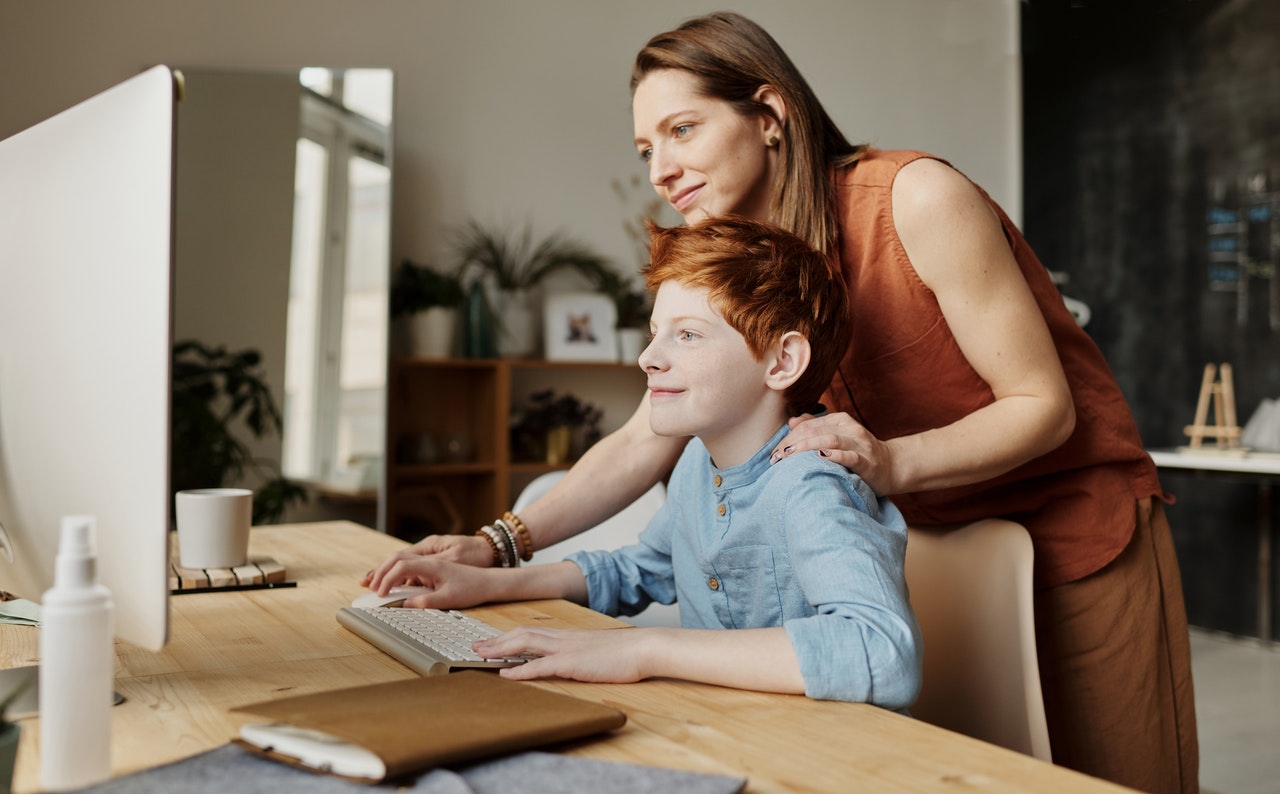
As social distancing orders are extended across the country, parents are becoming increasingly concerned about their children’s development. It is completely understandable, especially since we’re facing an unprecedented event that could keep families at home for the next several months or longer.
For children, specifically those who are elementary-school-aged and younger, practicing social distancing can be difficult. They are learning how to make friends and maintain relationships, so going without social interaction for a significant period of time could potentially impede their social development.
However, there are ways parents can help their children grow socially and emotionally during this transition. With a little creativity—and a lot of patience—families can thrive and not just survive as they practice social distancing.
Learning life and social skills starts early in life
Children typically experience their most important developmental milestones in the first few years of life, but it’s not until they are between the ages of three and a half and eight that they develop the most socially. During this stage, children first learn how to play with others rather than engage in parallel play. They begin to share, get along with others, problem-solve, negotiate, and communicate effectively. A child’s sense of self-identity begins to emerge during this time, as well. They start to define themselves by their positions in their peer groups and develop social skills to move up or down in position in accordance with their own personality and temperament.
Though this period of major growth only lasts a few short years, children learn valuable life and social skills that they’ll carry with them throughout their lives. From managing their own reactions to other children’s behavior to settling disagreements, these lessons—cooperation, communication, assertion, empathy, responsibility, self-control, and more—are fundamental to a child’s social development.
Depending on their children’s age and level of social development, parents may have to take extra measures to help their children grow while social distancing.
The impact of social distancing on children
In instances when children have already established social relationships, short-term social distancing can typically be overcome through virtual communication. Texting, video chatting, social media engagement, and participating in virtual events are all ideal ways for kids to interact with family and friends while social distancing.
However, for children who are still learning social development or experiencing developmental delays in social development, the virtual environment can be challenging and potentially lead to conflicting feelings. They might be able to verbally acknowledge how they’re feeling (i.e. “I miss my friends”), but they aren’t able to problem-solve ways to overcome those feelings. Even if their parents orchestrate a video call with friends or grandparents, they may not have established social communication skills necessary for online interactions.
As such, parents will have to think creatively to ensure their children have opportunities to socially interact with others. Thankfully, several communities across the U.S. and around the world are doing what they can to help the children in their neighborhoods. If you’ve scrolled through Facebook or Instagram recently, you might have seen posts for events such as the “Teddy Bear Hunt,” a social-distancing-safe scavenger hunt for kids.
What parents can do to help their children during social distancing
Even if families leave their homes for a bit of fresh air, they will be spending most of their time indoors for the foreseeable future. While it may not be ideal, parents can make the most of the situation by helping their children improve skills they may be missing out while stuck at home.
Here are a few activities parents and kids can do together:
- Pretend play. Researchers and therapists have championed the benefits of make-believe play for a long time, as it teaches young children social communication skills and helps them practice interacting in social situations.
- Problem-solving. Parents can set up an imaginary scenario where two toys get into an argument, and their child can help them resolve the situation.
- Schedule setting. Confidence, empathy, and self-esteem are just a few of the benefits of learning negotiation skills. One way parents can help their children develop this skill is by having them negotiate their schedule for the day and explain why they feel an event should be at a specific time. For instance, if a child wants to wait on bath time, the parent can have them list three reasons why it’s a good idea and three things that might happen if they decide to wait.
- Social modeling. Watching social modeling videos and social stories is an effective way for children to see social skills practiced through a non-threatening source. Social Skill Builder offers a variety of social skill apps for different ages and developmental levels. Social Thinking and Watch Me Learn also offer a variety of free resources on social modeling and social-emotional learning.
- Learning responsibility. Assigning children a daily household responsibility that correlates with their age and level of development can help them learn responsibility. Some of those responsibilities might include sorting the silverware, watering the plants, or matching the socks.
Social distancing presents a variety of emotional and social challenges for kids and their parents, but there is hope amid the chaos. While it can be difficult to adjust to changing schedules and new social routines, families can overcome these obstacles by working and growing together.

